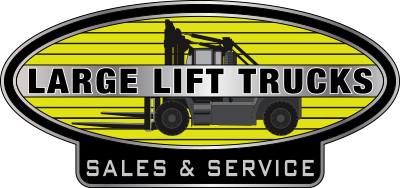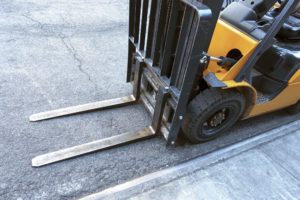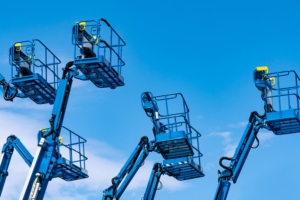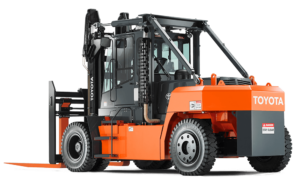Forklift Battery Maintenance Guide 2025
For better functioning of the Forklift battery in 2025, conduct regular inspections, follow proper charging cycles, maintain watering schedules, and clean terminals. The forklift battery provides energy to the truck to steer, lift, load, unload, and perform all essential functions. Before we dive deep into forklift battery maintenance, let’s know the basics.
About forklift battery
Forklift batteries are available in two variants they are:
- Lead-acid batteries
- Lithium-ion batteries
Lead-acid batteries:
Lead-acid batteries consist of lead plates immersed in a sulfuric acid solution. Typically work through electrochemical reactions between lead plates and sulfuric acid to store and release energy. They convert chemical energy into electrical energy during discharge and chemical energy during charging.
Lithium-ion batteries:
Lithium-ion batteries consist of an anode (negative electrode), cathode (positive electrode), Electrolyte, and separator. Electrolyte helps ions to move and separator helps to avoid physical contact between electrodes.
When charging lithium, ions move from anode to cathode to store energy and while discharging, lithium ions move from cathode to anode releasing energy to forklift.
Lead-acid batteries vs. lithium-ion batteries
- Lead acid batteries are cost-effective, have shorter life spans, require more maintenance, are slower in charging, are bulky, and produce high energy density. It comes in 2 variants conventional Flooded Lead Acid (FLA) and less maintenance Regulated Lead Acid (VRLA) or Absorbed Glass Mat (AGM).
- Lithium-ion batteries provide longevity, quick charging time, and low maintenance, but are quite expensive.
- Lead acid batteries require regular watering (distilled water) to maintain electrolytes and proper charging practices.
- Lead acid batteries produce dangerous gases during charging like hydrogen and oxygen hence It is essential to perform charging in well-ventilated areas.
- Lithium-ion batteries increase forklift uptime through fast charging and low downtime.
- It improves efficiency, and safety, lowers maintenance costs, and is used in multi-shift operations.
In this blog, let’s discuss the key maintenance practices for forklift batteries in 2025 and the quick & easy way for forklift battery maintenance.
Key maintenance practices
Visual Inspection
- Look for damages like leaks, cracks, and corrosion on terminals and cables.
- Fill the batteries with distilled water to cover the battery without overfilling.
- Check the cable and connector for any wear and tear.
- Check the battery temperature as extreme temperatures will deteriorate battery life.
Charging
- Look for the manufacturer’s charging guidelines to avoid overcharging and undercharging and maintain the charging cycle.
- Perform longer charge or equalization charging to reduce salvation, evenly distribute charge, prevent cell imbalance, and enhance battery life.
- It is important to equalize the battery once a week according to the usage or based on the guidelines of the battery manufacturer.
- Maintain proper ventilation during charging as they release hydrogen gas.
- Remember the 8-8-8 rule for charging schedules: they are 8 hours of charging, 8 hours cooling down, and 8 hours of usage or discharging.
Watering
- Typically lead-acid batteries require regular top-off with distilled water for every 5-10 recharges or more if used over time.
- Make sure the water covers the battery and does not overfill it.
Maintenance schedule
- Maintain a record for charging cycles, watering, maintenance activities, and inspections.
Safety Precautions
- Wear safety gloves, boots, and goggles when using the batteries.
- Avoid smoking in the charging area.
- Do not use sparking tools in the battery.
- Store the battery in a cool, dry, and ventilated place when not using.
Points to Ponder
- Choose high-quality batteries and chargers that are built for the battery type.
- Train the users with safety protocols and regular battery maintenance schedules.
- Do not use the battery over time as it may damage them.
- Clean the battery area from dirt and corrosion.
- Consider a lithium-ion battery as it offers long life and quick charging time, but a higher initial cost.
- Schedule a professional service with a technician for proper maintenance and to detect early problems.
- Always dispose of batteries according to local regulations.
- Implement a battery rotation program to make sure the battery is used evenly to avoid premature failure.
Quick & Easy Forklift Battery Maintenance in Large Lift Trucks
If you are looking for a professional forklift battery maintenance service, you’re in the right place. Large lift trucks offer battery sales and services for all industries. Our qualified technicians will visit your place and perform the service with utmost care to improve battery efficiency and performance. Talk to our expert today and learn how to maintain your forklift battery and learn about our products and services.
FAQs about Forklift Battery Maintenance
What is a forklift battery?
The forklift battery produces energy to allow the truck to steer, lift, load, unload, and perform all essential functions.
What is a lead-acid battery?
Lead-acid batteries work through electrochemical reactions where chemical energy turns into electrical energy during discharge and vice versa during charging.
What is a Lithium-ion battery?
In a lithium-ion battery, the lithium-ion moves from anode to cathode while charging, and lithium ions move from cathode to anode while discharging to provide energy to the forklift.
Difference between lead-acid battery and lithium-ion battery
Lead acid batteries are cost-effective, require more maintenance, short lifespan, and slow charging whereas lithium-ion batteries provide longevity, quick charging time, and low maintenance, but are quite expensive.




